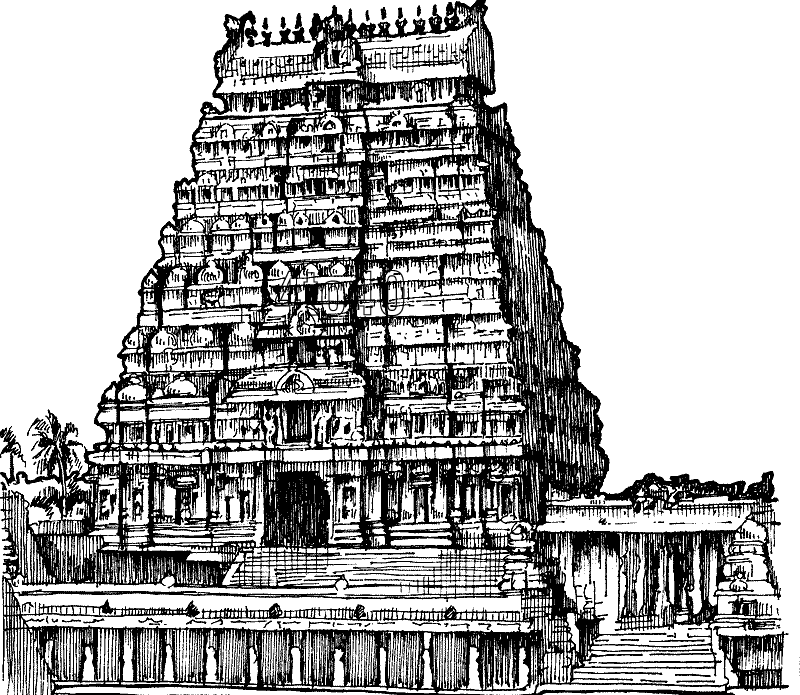LALITHA SAHASRANAMA
सर्वशक्तिमयी सर्व-मङ्गला सद्गतिप्रदा। सर्वेश्वरी सर्वमयी सर्वमन्त्र-स्वरूपिणी ॥ ५२॥

52. Sarvashakti mayi Sarva Mangala Sadgati Prada Sarveshvari Sarvamayi Sarvamantra Svarupini
सर्वेश्वरी (202)
Sarveshvari (202)
Meaning:
Devi is the supreme ruler of the universe and blesses her devotees.

Interpretation:
The Namah is made of two words Sarva meaning All or the Entire and Ishwari referring to Devi as the Supreme / Sovereign ruler.
Interestingly Devi gets this name Ishwari, being the consort of Lord Shiva who is the one whom the Vedas proclaim to be Ishwara.

There is no mention of Lord Shiva being referred to as Ishwara in both Rig and Sama vedas but in Yajur veda there are plenty of such references. The most prominent one, addressing Lord Shiva as Ishwara, is found in Sri Rudram. The concluding line of the 1st anuvakam of Sri Rudram addresses the Lord as both Visweswara and Sarveswara.

ॐ नमस्ते अस्थु भगवान विस्वेस्वराय महादेवाय त्र्यम्बकाय त्रिपुरान्थकाय त्रिकालाग्निकालाय कालाग्निरुद्राय नीलकण्ठाय मृत्युंजयाय सर्वेश्वराय सदाशिवाय श्रीमन् महादेवाय नमः
The word Ishwara can be bifurcated as: Ish + Vara. depending on the context, various meanings can be assigned to the term. However, the most acceptable definition is the one who is Supreme.
Ishwara is an epithet exclusively meant for Lord Shiva who is often addressed as Maheshwara and Parameswara, apart from Sarveshwara. In Vaishnavism the epithet is borrowed to refer Lord Narayana as Venkateshwara.

It is either Shiva (Ishwara) or Devi Parvati (Ishwari) who confers the title Ishwara to others such as Vinayaka (Ganeshwara) or Sani bhagwan (Shaneeshwara). Interestingly in the Ramayana both Lord Rama and Ravana get Ishwara as a suffix to their respective names - Rama after worshiping Shiva at Rameshwaram is referred to as Rameshwara and Ravana, for his pure devotion towards the Lord, as Ravaneshwara or Lankeshwara (Lankeshwar Bhaye Sab jag jana).

Quotes from Srimad Bhagvad Gita and Sri Suktam:
Krishna, in Bhagavad Gita, has given the term Ishwara an universal dimension by preaching that Ishwara (Lord Narayana himself) resides in the heart of all Living organisms in this universe
ईश्वरः सर्वभूतानां हृद्देशेऽर्जुन तिष्ठति।

Similar inference is found in the Sri Suktam, where Devi Lakshmi is described as the one who is the ruling power in all beings; please invoke Her who is the embodiment of the word Sri.
ईश्वरींग् सर्वभूतानां तामिहोपह्वये श्रियम् ॥
Author's Notes:
Vaak Devi-s have addressed Devi as Sarveshwari not without reasons. On the surface it might appear that Devi is the Supreme ruler, but it has a deeper, inner meaning.

Devi, as Sarveshwari, guides her devotees, especially the Devi Upasakas / Sadhakas, into the Chid Akasha state. Reference to this is found in the book Chid Gagana Chandrika, an important Tantric work belonging to the Krama system of Kashmir Shaivism.

सप्तधा वामसि या त्वमीश्वरी व्योम शांत मुख चिद्गुणा स्पदम्। भगवानं नायसि नापरं शिवं द्वंद्वयाऽद्वयपदातिलङ्किनी ॥
Devi is above all duality in creation. She as Ishwari is glowing through the seven channels eyes, ears, nostrils and mouth. She leads the Siddha or Sadhaka to the path of evolution or involution, to the tranquil Chid Akasha, the space (sky) of consciousness.

Chid Akasha is a state of meditation where the mind, along with intellect and concentration, merges with Pure Consciousness through the paths of devotion, knowledge and action. It's the supreme state.
Disclaimer: All matters contained in this article are the property of www.templesofasia.com. The opinions expressed in this article are purely that of the author. The author alone is responsible for the accuracy, authenticity, completeness and validity of all the information in the article.


留言